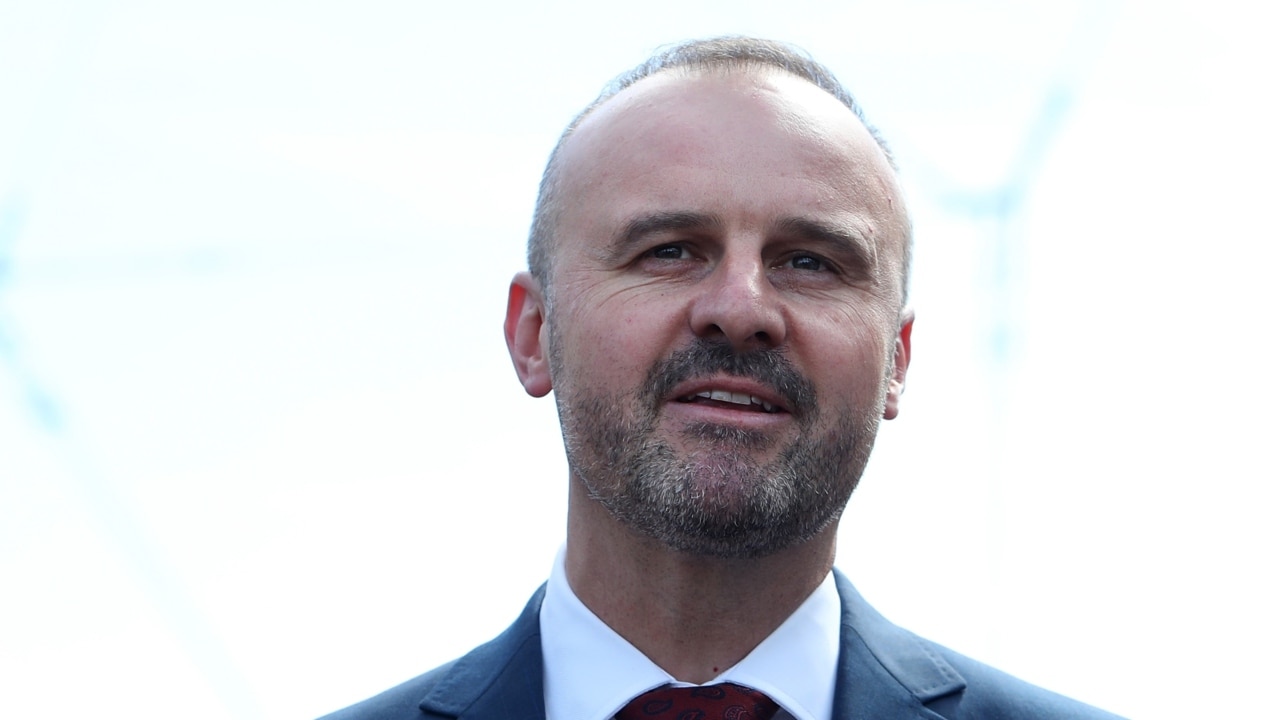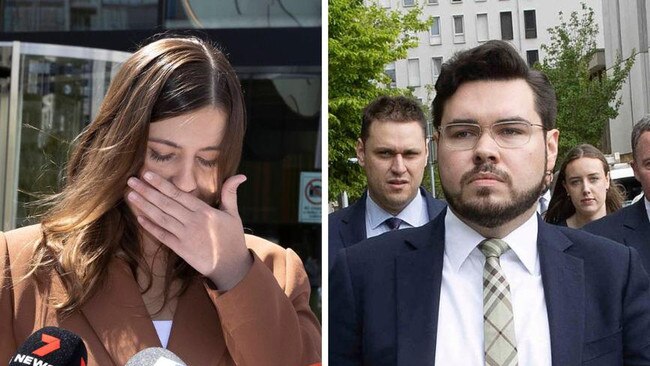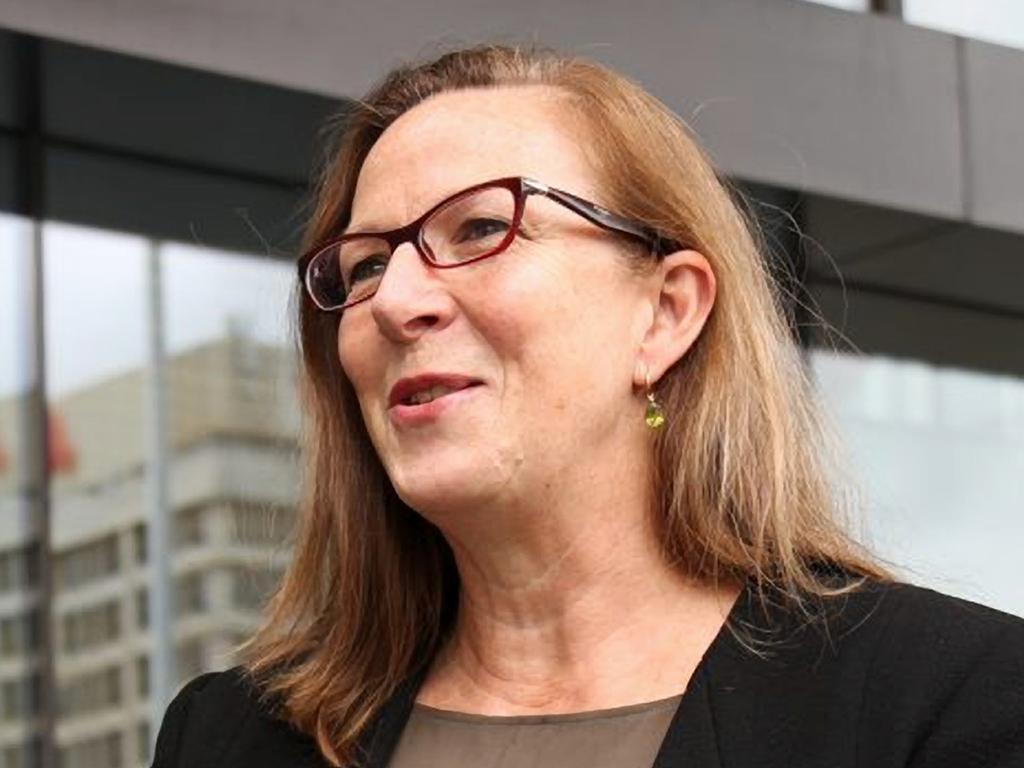
It is worth casting an unhurried eye over how the Chief Justice of the ACT Supreme Court responded to an email she received on the weekend from Bruce Lehrmann.
At 8.31pm on Saturday evening, Lehrmann, the former political staffer accused of rape by Brittany Higgins, wrote to Chief Justice Lucy McCallum, who presided over the infamous rape trial and other related proceedings last year, asking her to lift all relevant remaining non-publication orders and suppression orders so more light could be shone on those proceedings.
The Chief Justice – who famously does not waste time watching trash TV – responded very quickly indeed, via an associate, at 4.33pm on Sunday.
Her Honour declined his request. She told Lehrmann he would have to jump through some more legal hoops – by making a formal application – before the court would revisit the suppression orders.

Judicial robes in this country are worn with a sombre understanding of the importance of open justice. There are three planks to this principle: first, an open court where the public can view proceedings; second, information and evidence are presented publicly in court; and third, open justice depends on fair and accurate reports by the media and other parties of what happens in the courtroom.
As one High Court judge noted, without public scrutiny “abuses may flourish undetected”. There are, of course, times when evidence and other information is and should be suppressed – say, for national security reasons – but courts have long ensured that exceptions are not lightly made.
Did the miserable weather on Sunday around the nation’s capital lead the Chief Justice to don the wrong robe when answering Lehrmann’s request that day? Her response to Lehrmann is curious.
When Justice McCallum imposed non-publication orders about proceedings last November she did so from her chambers. Ergo, as barristers have told me this week, the Chief Justice can lift those same orders from her chambers. No jumping through hoops required.
Open justice is not some judicial riff. It is a fundamental principle of our legal system. Therefore, one might imagine a chief justice would bend over backwards to facilitate it. Instead, she told Lehrmann, who has had to rely on pro bono lawyers ever since his career stalled after Higgins appeared on The Project, to effectively find another barrister to ask the judge to lift the suppression orders.

Maybe binging Love Island, or any TV show about ordinary folk, would be helpful for her Honour.
Those continuing suppression orders mean this newspaper still cannot tell you about nature of proceedings filed by Lehrmann’s legal team on 22 November last year. In April, we told you all that we could about serious claims that then ACT director of public prosecutions Shane Drumgold had failed to take “easy and obvious steps” to ensure a fair trial.
Believing in open justice, this newspaper wrote to Justice McCallum in mid-July requesting she lift all remaining non-publication and suppression orders. Through her associate, her Honour declined to act, pointing to court procedures for those who are not a party to the proceeding.
A month later, she declined to act when Lehrmann, who was a party to the proceeding, asked for some transparency.
If you think it all sounds a little barmy, here’s a short recap on the court-imposed secrecy in this matter. After the mistrial, Justice McCallum closed the court and imposed a non-publication order on those November proceedings to ensure, she said, that a second trial would not be undermined by media coverage.
On December 2, after the DPP knew what was coming his way in those November proceedings, he decided against a new trial. McCallum’s reason for secrecy went out the window. That same afternoon, when Lehrmann and some media companies asked her to lift suppression orders, so we could tell you about the proceedings, her Honour stated a new reason to keep you all in the dark. The Chief Justice said it was due to the mental health of Higgins.
McCallum’s judgment conceded that the DPP took a “neutral position” – he did not oppose the media telling you about the claims about him.
Still, her Honour wouldn’t budge. “It is my firm view that publication of that material would give the media a new story or a new slant that would inevitably result in further harm to the complainant, and that is not a step I am prepared to take,” she wrote in a judgment delivered that day.

Adding insult to injury, the judge kept her December 2 judgment secret too, making it public on April 17 this year, only after the Sofronoff inquiry sought access to it. As Justice Kirby once noted “even the Star Chamber heard cases publicly.”
The idea that a judge would continue to keep material secret to avoid giving the media a new story or a new slant defeats the purpose of open justice – and of the media. That’s what we do. We explore new angles, provide new information to the public. The alternative would be hearing only from Higgins’s media cheer squad.
Nine months later, why would any judge, let alone a chief justice, continue to risk a suggestion that they are not fully committed to open justice? There are no future proceedings. Higgins appears in excellent spirits, given her internship at the Palais des Nations in Geneva.
This newspaper is committed to bringing you new stories, new slants and new scrutiny of every character in this tale, including judges – especially judges who appear to choose suppression over transparency. The mistrial last year meant the role of the Chief Justice has received scant attention. To quote Justice Kirby once again: “[Jeremy] Bentham declares that publicity ‘is the soul of justice … it contributes to the integrity of the judges and produces public confidence in their judgments, encouraging the judges to the faithful performance of their duties’.”
Secrecy ad infinitum in this matter will only encourage distrust, not just about a judge’s role but also of the broader criminal justice system. No one wants to think there is some kind of legal protection racket.
In his email to Justice McCallum on Saturday evening, Lehrmann also requested that she allow the public to learn, finally, what material the judge kept from the jury.
During the trial, the chief judge intervened many times to stop Lehrmann’s barrister, Steven Whybrow SC, from putting information to Higgins during the cross-examination, and from tendering evidence for the jury’s consideration about Higgins’s credibility. After being marked by the judge as an MFI – meaning Marked For Identification – it is lost to the dark recesses of the court. Only by seeing these MFIs can we analyse whether Justice McCallum’s legal decisions stack up. That is what open justice means – not just that a defendant is tried in open court but that light shines on a judge’s decisions.
No judge is perfect. What if there were sound legal arguments that some of the material that the judge withheld should have been tendered for the jury’s consideration and put to the complainant?
Take MFI 11. You won’t know what it is from reading the transcript. Her Honour intercepted this piece of evidence. She refused requests that it be put to Higgins during cross-examination. The jury never heard about a note on Higgins’s phone dated May 2020 headed “thesis” and that featured lines about “Anatomy of a Political Scandal”. It was written many months before Higgins appeared on The Project and around the time she and David Sharaz appear to have become an item.

If, for argument’s sake, a judge wants to make the court a kinder place for rape complainants, by restricting evidence that, on a different interpretation of the Evidence Act, could be put to the complainant, it is far better that this apparent judicial-led social crusade be done openly.
Increasingly, there appears to be a misguided bespoke form of “justice” applied to certain cases – the Higgins case is the most recent and high-profile one. This is anathema not only to open justice but also to the rule of law.
Light is needed in every corner of the Higgins-Lehrmann imbroglio. Walter Sofronoff KC cast a great deal of light on the conduct of the former ACT DPP, the AFP and ACT Victims of Crime Commissioner Heidi Yates.
The new federal anti-corruption commission will surely have a role in exposing any foul play in Canberra behind the most unusual multimillion-dollar payout to Higgins. There are further dark recesses to this debacle. Justice McCallum’s courtroom appears to be one of them.







